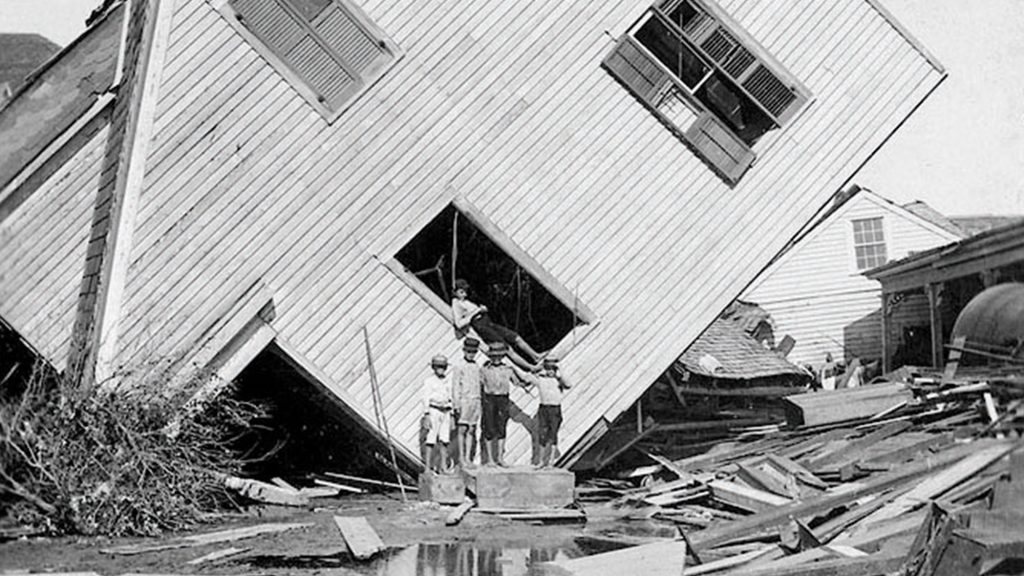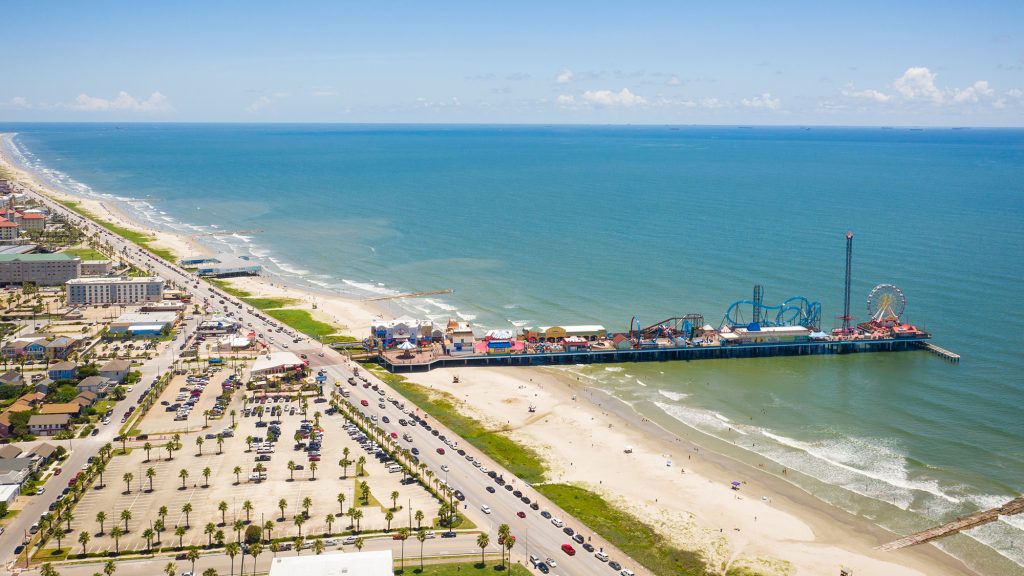From Ruins to Resilience: Galveston Island
A diverse island city nestled on the Gulf Coast of Texas, Galveston is known for its sprawling sandy beaches, family-friendly tourist attractions, and pristine historic districts. But before it earned its moniker as the “Playground of the South,” Galveston Island endured a great tragedy. One that remains among the deadliest natural disasters ever recorded in the United States.
In the late 1800s, the city was a hotbed of industry. A major port town, Galveston also flourished in the banking and retail industries. The history books even called it the “Wall Street of the South,” as the number of millionaires who called the city home eclipsed those of nearly every other American city. By 1885, Galveston had become one of the busiest commercial centers and the largest, richest city in Texas. But in a twist of fate, all that progress would soon be washed away.

Storm Surge and Sorrow
In 1900, the residents of Galveston were surprised by a storm with winds that reached 120 miles per hour and waves that towered 16 feet high. Hindsight would name the hurricane The Great Storm, but there was nothing “great” about it. Unleashing a wall of water that surged through buildings, bridges, and homes, the storm pounded the city and demolished everything in its tracks.
Because the storm hit at the turn of the century, before weather-predicting and sonar technology was even a blip on the radar, Galveston’s citizens had no warning of the severity of the impending storm and many failed to get to safe land in time. Sadly, most of them did not make it. By the time the storm moved on, it had claimed more than 10,000 lives.
Raising Galveston From Ruins
Following the devastation, civic leaders and volunteers jumped into action. Their response and recovery began with caring for the hurricane’s survivors and then, of course, burying the departed. As communication and water services were restored, attention was turned to laying new telephone lines and getting the trolleys and harbor freight services running again. But rather than just restore Galveston to its preexisting condition, the city’s leaders sought solutions to proactively protect their island city from enduring tragedy of this magnitude ever again.
Their efforts resulted in two brilliantly engineered feats that remain impressive today: construction of the Seawall and raising the island’s elevation. Concocted by a board of three engineers — Brigadier General Henry Martyn Robert, Alfred Noble, and H. C. Ripley — the blueprint for the Seawall rendered a massive sloping concrete wall designed to take the brunt of storm waves, breaking them up before they could do significant damage. By the end of July 1904, the initial segment of the Seawall was complete, stretching more than 3 miles long and 5 feet wide.
After the Seawall was built, engineers moved on to “raising the grade.” The elevation project required millions of dollars and cooperation from the city’s residents, as homes and buildings were lifted with hand-cranked jacks and wooden supports, sand and mud were pumped in underneath and left to settle, and buildings were reconstructed on the higher ground. In the end, some parts of Galveston were raised by 17 feet.

A Legacy of Resilience
Today, Galveston is home to nearly 55,000 people, with attractions including its Moody Gardens, Historic Pleasure Pier, and marvelous 10-mile-long Seawall luring tourists to the island in droves. Though it was built as a protective measure, people can’t help but stop to admire the longest continuous sidewalk in the U.S. As the city commemorates the 125th anniversary of the 1900 hurricane this year, know that no matter how much the landscape changes, the resilient spirit of the city will forever be Galveston Strong.
Texas has had its fair share of engineering and architectural feats. Check out the history of some of the most iconic buildings and structures in our state.



